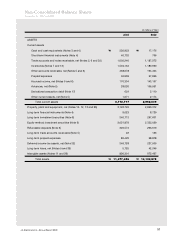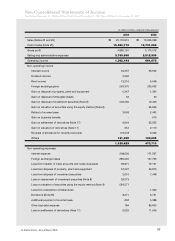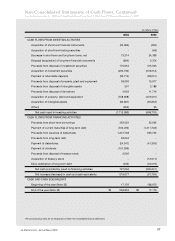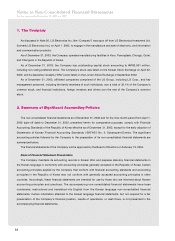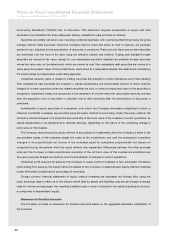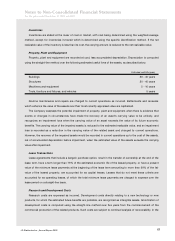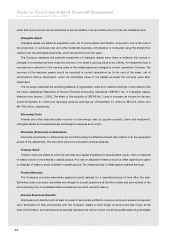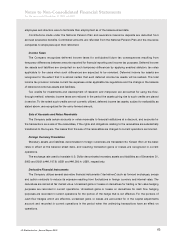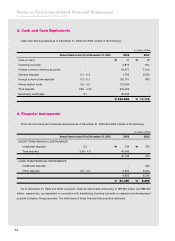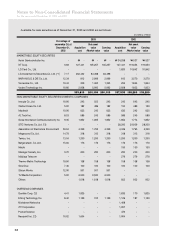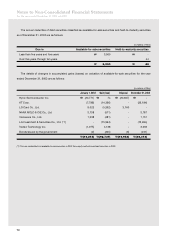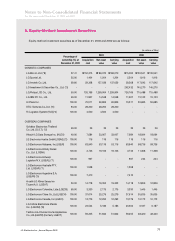LG 2003 Annual Report Download - page 61
Download and view the complete annual report
Please find page 61 of the 2003 LG annual report below. You can navigate through the pages in the report by either clicking on the pages listed below, or by using the keyword search tool below to find specific information within the annual report.
LG Electronics Inc._Annual Report 2003 61
Notes to Non-Consolidated Financial Statements
For the years ended December 31, 2003 and 2002
Inventories
Inventories are stated at the lower of cost or market, with cost being determined using the weighted-average
method, except for inventories in-transit which is determined using the specific identification method. If the net
realizable value of the inventory is less than its cost, the carrying amount is reduced to the net realizable value.
Property, Plant and Equipment
Property, plant and equipment are recorded at cost, less accumulated depreciation. Depreciation is computed
using the straight-line method over the following estimated useful lives of the assets, as described below.
Estimated useful life (years)
Buildings 20 - 40 years
Structures 20 - 40 years
Machinery and equipment 5 - 10 years
Tools, furniture and fixtures, and vehicles 5 years
Routine maintenance and repairs are charged to current operations as incurred. Betterments and renewals
which enhance the value of the assets over their most recently appraised value are capitalized.
The Company assesses the potential impairment of property, plant and equipment when there is evidence that
events or changes in circumstances have made the recovery of an asset’s carrying value to be unlikely, and
recognizes an impairment loss when the carrying value of an asset exceeds the value of its future economic
benefits. The carrying value of the impaired assets is reduced to the estimated realizable value, and an impairment
loss is recorded as a reduction in the carrying value of the related asset and charged to current operations.
However, the recovery of the impaired assets would be recorded in current operations up to the cost of the assets,
net of accumulated depreciation before impairment, when the estimated value of the assets exceeds the carrying
value after impairment.
Lease Transactions
Lease agreements that include a bargain purchase option, result in the transfer of ownership at the end of the
lease term, have a term longer than 75% of the estimated economic life of the leased property, or have a present
value of the minimum lease payments at the beginning of the lease term amounting to more than 90% of the fair
value of the leased property, are accounted for as capital leases. Leases that do not meet these criteria are
accounted for as operating leases, of which the total minimum lease payments are charged to expense over the
lease period on a straight-line basis.
Research and Development Costs
Research costs are expensed as incurred. Development costs directly relating to a new technology or new
products, for which the estimated future benefits are probable, are recognized as intangible assets. Amortization of
development costs is computed using the straight-line method over five years from the commencement of the
commercial production of the related products. Such costs are subject to continual analysis of recoverability. In the


